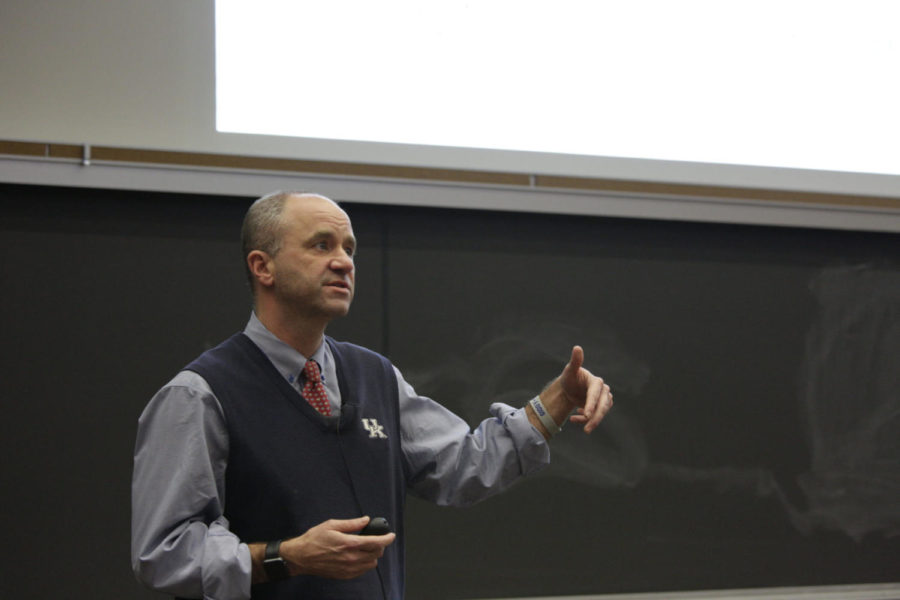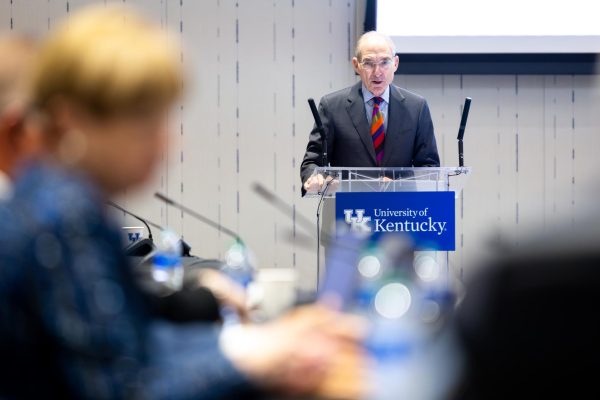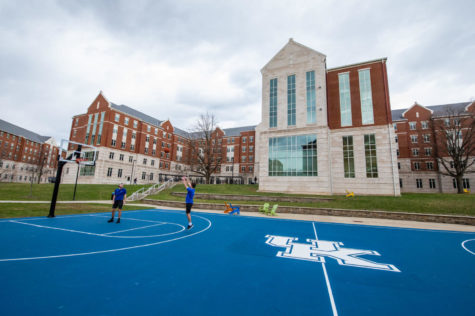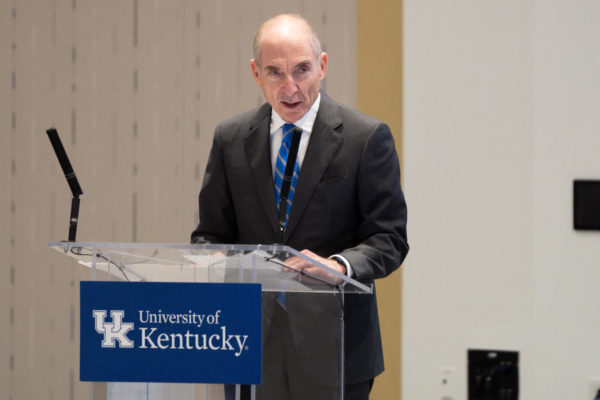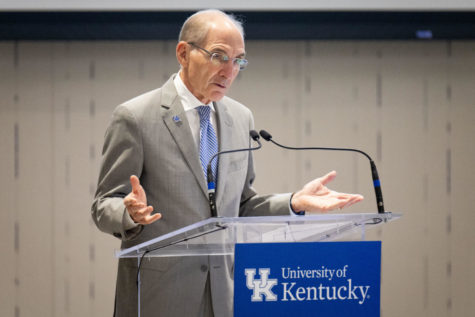With last semester’s bomb threat in mind, UK officials look to move forward
UK spokesman Jay Blanton speaks to the University Senate in the White Hall Classroom Building on Monday, Jan. 14, 2019, about the UK public relations response to a bomb threat directed at campus in November 2018. Photo by Rick Childress | Staff
January 25, 2019
Two months after a bomb threat was directed toward UK’s White Hall Classroom Building, university officials say they have room to improve campus safety and crisis communication.
UK Police Chief Joe Monroe was accompanied by UK Spokesperson Jay Blanton as the pair recently addressed the November 2018 string of social media threats with the University Senate.
After compiling and reviewing what is called an “after action report” Blanton said candidly that the university’s crisis communication team has walked away with some valuable lessons. He said the main issue the team faced when UKPD learned of the threats was choosing what information to relay to the campus community.
“The police department never considered for a number of reasons the threat to be a credible threat, but we were in a discussion about what to communicate and when,” Blanton said.
UK’s crisis communication team includes university officials like President Eli Capilouto, Vice President Eric Monday, Provost David Blackwell, Monroe and Blanton.
Blanton said that after the administration published a bulletin initially informing the campus community about the “unsubstantiated” threats, but there was still some confusion about why a UK Alert was not issued.
UK Alerts are only published when the administration is asking the campus community to take action or when there is an imminent crisis affecting the campus, Blanton said. He determined that the threats, which were directed at White Hall via social media, did not meet this criteria.
“When and how that alert is used is a misunderstood thing, and it’s not an easy topic,” Blanton said. “We know we need to do a better job, and I think frankly communicating about what’s the context for an alert.”
When adverse events like a threat to campus occur, a UKPD threat assessment team is charged with evaluating the credibility and urgency of the threat, Monroe said. He assured the University Senate that UKPD’s trained threat assessment teams know what they’re looking at, and often consult with the FBI.
All in all, Blanton said that the administration and UKPD handled the threats well, but ultimately have some more to improve on.
UK has reportedly spent more than $10 million on safety upgrades in the past seven years, according to Blanton. This money has funded a number of accomplishments Monroe said he is especially proud of.
“There’s been a real targeted and intentional investment into safety. We’ve always got work to do. It’s an ongoing, never-ending process,” Blanton said.
Monroe told the senate that the campus was now equipped with 2,540 security cameras, and the university is implementing a new video management system that will allow the police to adequately handle all of the footage coming from all of those cameras.
There is not someone always staring at feeds from the several thousand cameras, Monroe said. Much of the footage from the cameras will be used as evidence after a crime has potentially occurred.
Monroe said that as the eleventh largest police department in the state, UKPD has been trying to keep its operations in line with the growth of the university. UKPD currently employs nearly 70 sworn officers, and as UK grows, the police force will grow with it.
The long chain of UK’s 42 blue emergency phone towers can be found as far south as the parking lots around Kroger Field to as far north as the Good Samaritan Hospital, Monroe said.
During his presentation on campus safety upgrades, Monroe also touted the UKPD’s implementation of the Livesafe mobile safety app. The app is designed to be a way for members of the campus community to interact with the UKPD should an emergency occur on campus.
Monroe said that when the app was first introduced to campus, President Capilouto even chose to test it out.
“Dr. Capilouto used it one night while he was out walking his dog and we found him,” Monroe said. “Thank God.”









































































































































